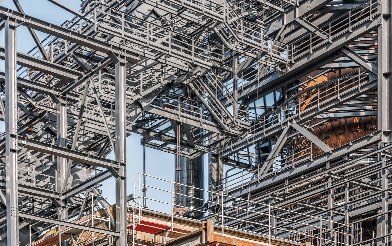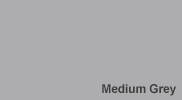
PID 60
Universal anti-corrosive primer

 Coverage: 12 m²/l Coverage: 12 m²/l |
 Application temperature: +5°C to +35°C Application temperature: +5°C to +35°C |
 Drying: 1 h Drying: 1 h |

PROPERTIES
PID 60 is a universal anti-rust primer made from alkyd resins and anti-corrosive pigments for the priming and protection of ferrous and non-ferrous metals, gelcoat, galvanised metal and old painted surfaces etc.
Functions
- A single pack anti-rust primer and bonding coat.
- Keeps surfaces rust free before handling and/or shipping.
- Easy to apply. Good opacity.
- Excellent adhesion.
- Good filling properties.
- Overcoat with all types of rust protecting finishes – 1 or 2 pack.
WHERE TO USE
- Interior and Exterior.
- Horizontal and Vertical surfaces
- Ferrous and non-ferrous metals, Plastic, Gelcoat, Galvanised surfaces….
- Cement, Concrete, Fibre-cement….
- Previously painted surfaces.
- Metal structures – Girders, RSJ’s, Pipes, Machinery, Tanks…
SURFACE PREPARATION
- Surfaces must be clean, dry and free of oil, grease, rust and other surface contamination including any sanding, blasting or other preparation residue before applying PID 60.
Metal Surfaces exc. Galvanised, Zinc and Aluminium:
- Option 1:
- Clean surface with PURATROL or a suitable solvent e.g. Acetone. Allow to dry.
- Pickle the surface with OWAPHOS. - Option 2:
- Prior to blasting or manually preparing the surface all contamination should be removed using fresh water and the surface dried. All oils, grease etc. must be thoroughly removed using a suitable cleaning solvent e.g. Acetone. Deposits firmly adhered to the surface should first be removed by scraping and then cleaned using the solvent.
- Remove all traces of mill scale, rust, rust scale and other foreign matter by blast cleaning to SIS-Sa2½ or at the least manually to SIS-St3 by grinding (P24-P36) or sanding (40-120 grit).
- Remove all blast and manual preparation residue by vacuum cleaner, air blower or a stiff clean brush.
- For difficult areas the removal of rust by chemical means may be possible with OWAPHOS
Aluminium:
- Clean surface with PURATROL, SOAPCLEAN or a suitable solvent e.g. Acetone. Allow to dry.
- Option 1:
- Pickle the surface with OWAPHOS - Option 2:
- Blast surface using a suitable medium or sand with 24-120 grit abrasive compatible with Aluminium.
- Remove all blast and manual preparation residue by vacuum cleaner, air blower or a stiff clean brush.
- For difficult areas pickle the surface using OWAPHOS.
Galvanised/Zinc:
- Clean surface with PURATROL or a suitable solvent e.g. Acetone. Allow to dry.
- Pickle the surface with OWAPHOS.
Gelcoat/Plastic:
- Clean surface with PURATROL, NET-TROL or hot soapy water, rinse thoroughly and allow to dry.
- Abrade with 180-220 grit sanding discs. Remove all sanding residue by vacuum cleaner, stiff clean brush, tack cloth or a cloth soaked in a fast flashing solvent e.g. Methylated Spirits (Not White Spirits).
Previously Painted Surfaces:
- Checking existing finish for adhesion by using the Cross Hatch test method.
- If existing finish is weekly adhered it must be completely and thoroughly removed by blast cleaning to SIS-Sa2½ or at the least manually to SIS-St3. If coating is well adhered proceed as follows:
- Thoroughly clean and sand/blast surface to form a good key, feather in any sharp edges and any bare areas of metal to be manually prepared to at least SIS-St3.
Note: It is imperative that prepared bare metal surfaces are coated with PID 60 within 8 hours.
Application
- Stir well before and during use.
- Apply an even, single coat at the recommended wet film thickness. Allow to dry.
- If required a second coat may be applied.
- PID 60 may be diluted up to 30% with White Spirits for spray application (NOT Airless or Airmix).
- If a perfectly smooth surface is required PID 60 may be sand when 100% cured before applying the finish.
- If the over coating time of PID 60 exceeds 5 days, clean surface with a suitable solvent e.g. Acetone.
- Sand with 220-230 grit abrasive and dust off. Wipe surface with a cloth soaked in Methylated Spirits or a tack cloth to remove any remaining sanding residue.
Note: 3 coats of PID 60 may be applied to give a silky matt anti-corrosive finish.
Color available

* Information on the level of omissions of volatile substances in indoor air, presenting a risk of toxicity through inhalation, on a classification scale ranging from A+ (variable omissions) to C (high omissions).



























